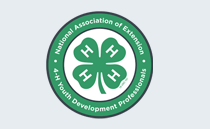Abstract
The 4-H program relies on trained volunteers to facilitate youths’ acquisition of life skills in relevant subject matter areas (STEM, Healthy Living). A large part of the 4-H professionals’ objective is to undergird their volunteers in program delivery. The content of volunteers’ training emphasizes the 4 essential elements for youth development programming, namely: 1. Creating an atmosphere of belonging for diverse youth; 2. Promoting generosity through service to their families and communities; 3. Supporting youth mastery of globally applicable life skills and specific skills within subject matter areas of expertise; and 4. Facilitating youths’ sense of independence by self-selecting topics in projects they are intrinsically motivated to engage in. The focus of this volunteer self-report-based research is twofold: 1. to shed light on the relationship between volunteer training and promoting positive youth development via essential elements of 4-H programming; and 2. to assess circumstances that influence volunteers’ likelihood in use of the essential elements in their 4-H programs.
In 2018 4-H volunteers in Florida were asked their perceptions of the extent to which they facilitated each essential element, indicated by multi-item, multi-factor measures. Contextual predictors of use of essential elements, including breadth of volunteer training, with moderating variables such as tenure in 4-H, were examined in association with the essential elements. Results supported prior findings with associations between breadth of volunteer training and the essential elements of belonging and mastery. Volunteers’ tenure in the 4-H program moderated the relationship between breadth of training and the essential element of mastery, with stronger associations among less seasoned volunteers. Moreover, among volunteers reporting greater breadth of trainings in the past year, males reported greater levels of promoting independence and generosity than females. Our findings suggest mastery is a relevant essential element retained in training and applied in 4-H volunteers’ practice. Implications are discussed regarding training content and promotion of responsibilities for more seasoned volunteers, as well as considerations of possible effects of differences in gender role expectations influencing the practice of promoting certain essential elements.
Recommended Citation
Sarver, Kimber; Fogarty, Kate; Johns, Tracy; Hensley, Sarah Thomas; and Pracht, Dale W.
(2024)
"Volunteer Training, Tenure, and Facilitation of Essential Elements in 4-H: Examining Conditions that Promote Positive Youth Development Practices,"
Journal of Youth Development: Vol. 19:
Iss.
2, Article 4.
Available at:
https://tigerprints.clemson.edu/jyd/vol19/iss2/4
Included in
Child Psychology Commons, Civic and Community Engagement Commons, Community-Based Learning Commons, Developmental Psychology Commons, Leadership Studies Commons



